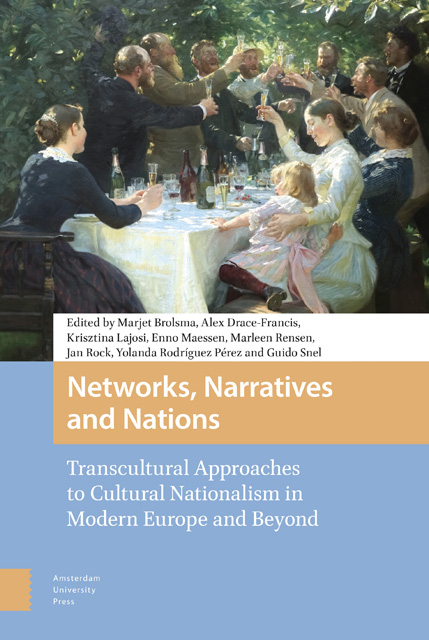 Networks, Narratives and Nations
Networks, Narratives and Nations Book contents
19 - The Buried Tombstone, the Melting Iceberg, and the Random Bullet : History, Memory and Antagonism in Ireland
Published online by Cambridge University Press: 16 November 2022
Summary
Abstract
This essay follows Joep Leerssen's inspiration in considering the operations of memory in Irish culture and history, and especially of strategic forgetting – in the form of “aphasia” rather than “amnesia,” in David Fitzpatrick's formulation. This is related to the depth of antagonism encoded in Irish history, often producing violent confrontations, and the need to negotiate these memories in post-revolutionary civil society. Literary reflections on this syndrome in the work of Yeats and Heaney are discussed, some comparisons made with central and eastern Europe, and the operations of official commemoration of the revolutionary era considered. These complications of the national narrative are finally encapsulated in an “imagined reminiscence” from the author's own family history.
Keywords memory; history; aphasia; violence; Ireland
“This is the use of memory,” wrote T. S. Eliot in “Little Gidding,” “for liberation.” Joep Leerssen fell on the same idea a long time ago, and his two marvellous books on Irish literary history show how memory has been reworked, reprocessed and revived over and over again in Irish culture. The attention currently paid to cultural memory in Ireland, especially during the commemoration of the centenary of the Irish Revolution of 1912–22, owes a great deal to the scholar to whom this volume is dedicated. Leerssen has also impelled some of us to consider the way that the understanding of Irish history has been dictated by narrative forms. He has navigated epistemological minefields of contested assumptions and interpretations and spoken to those of us who had been reading (and in some cases teaching) Hayden White, Michel Foucault and Paul Veyne, and were quite keen on decoding the differences between “narratology” and fiction. Here again, he has made us think about memory and history – and particularly perhaps, forgetting.
My title invokes three metaphors. The buried tombstone refers to the grave of a rebel who fought in the 1798 Rebellion in Ulster and whose comrades, in order to prevent desecration of his grave, buried the tombstone (suitably engraved) along with the coffin. It is an image taken from Guy Beiner's brilliant book on the memory of 1798 in Ulster.
- Type
- Chapter
- Information
- Networks, Narratives and NationsTranscultural Approaches to Cultural Nationalism in Modern Europe and Beyond, pp. 243 - 254Publisher: Amsterdam University PressPrint publication year: 2022


